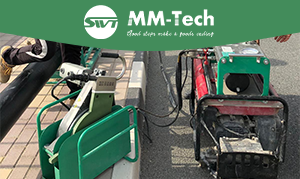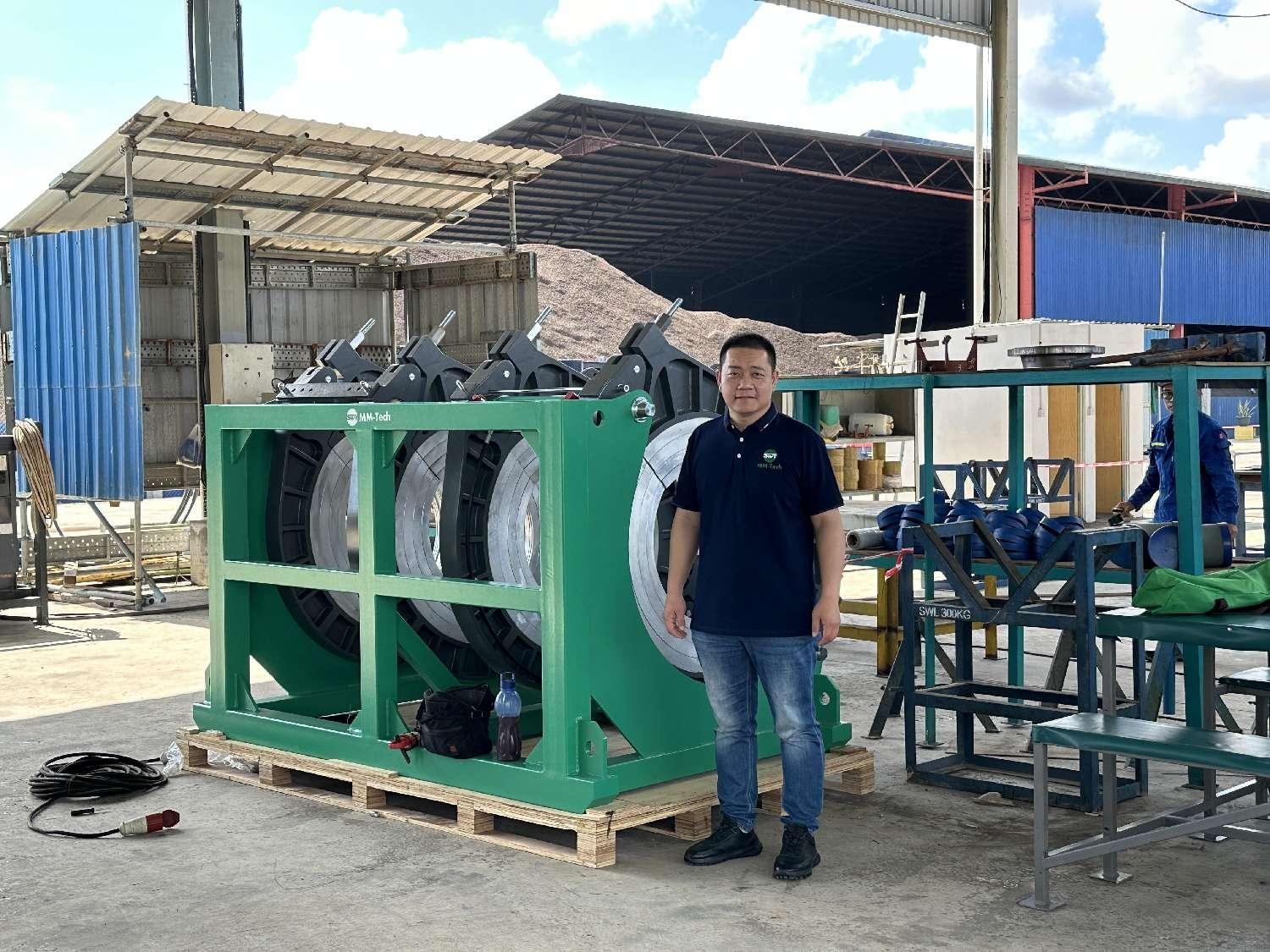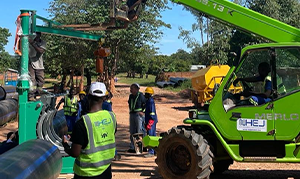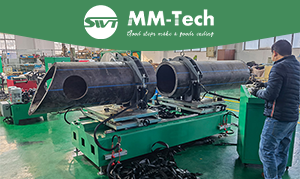HDPE pipe butt fusion welding plays a crucial role in municipal engineering by creating durable, leak-proof connections for pipelines. This method ensures long-lasting infrastructure, reducing maintenance costs and environmental risks. The use of advanced equipment, such as the HDPE pipe butt fusion welding machine in municipal engineering, enhances precision and reliability. MM-Tech‘s Butt Fusion Machine offers innovative features that simplify the process, ensuring strong joints and efficient installations.
Key Insights on Adoption:
Key Insights
Details
The adoption of HDPE pipes in municipal projects is increasing due to their durability and leak-proof characteristics.
Market Drivers
The market is driven by the demand for efficient pipe joining solutions and sustainability initiatives.
Challenges
High initial investment and the need for skilled operators may hinder adoption rates.
The durability of HDPE pipes achieved through fusion techniques significantly reduces maintenance needs and prevents leakages, ensuring a longer lifespan for the piping system.
Key Takeaways
HDPE pipe butt fusion welding makes strong, leak-free connections. This helps build durable systems and lowers repair costs.
Cleaning and lining up pipe ends properly is very important. It helps make good welds and stops leaks.
Learning advanced skills and using good tools, like the MM-Tech Butt Fusion Machine, improves welding speed and accuracy.
Understanding HDPE Pipe Butt Fusion Welding
What is HDPE pipe butt fusion welding?
HDPE pipe butt fusion welding is a process used to join two ends of high-density polyethylene (HDPE) pipes. This technique involves heating the pipe ends to a specific temperature, allowing them to soften, and then pressing them together under controlled pressure. The result is a seamless, leak-proof joint that matches the strength and durability of the original pipe material.
The process follows key principles to ensure a reliable connection:
Pipe Alignment: Proper alignment of the pipe ends is critical.
End Preparation: Machining eliminates irregularities on the pipe ends.
Heating: A heating plate softens the pipe ends at temperatures between 400 to 450 degrees Fahrenheit.
Melting: The heating plate is removed once the ends are adequately melted.
Joining: Controlled force presses the melted ends together.
Cooling: The joint solidifies, forming a strong bond.
This method requires precision in temperature and pressure control to achieve optimal results.
Benefits of HDPE pipes in municipal engineering.
HDPE pipes offer numerous advantages in municipal projects, making them a preferred choice for infrastructure development. These pipes are lightweight, corrosion-resistant, and highly durable, with an expected lifespan exceeding 100 years. Their recyclability contributes to environmental sustainability by reducing landfill waste. Additionally, HDPE pipes minimize leaks, protecting soil and water sources from contamination.
Municipalities benefit from significant long-term cost savings due to the low maintenance requirements of HDPE pipes. Their resistance to chemical degradation reduces repair needs, while their lightweight nature allows for faster installation, lowering labor costs. These features make HDPE pipes an efficient and eco-friendly solution for municipal engineering.
Why butt fusion is the preferred method for HDPE pipe joining.
Butt fusion is the most reliable method for joining HDPE pipes due to its ability to create seamless, leak-proof connections. This technique eliminates the need for adhesives or solvents, reducing contamination risks. The joints formed are highly durable and require minimal maintenance, ensuring long-term operational efficiency.
The process offers consistent joint quality, making it suitable for critical applications like water distribution and gas pipelines. Its reliability stems from precise steps, including controlled heating and pressure application, which enhance the strength of the joint. Municipal projects benefit from the low maintenance and operational costs associated with butt fusion, making it the preferred choice for HDPE pipe joining.
Step-by-Step Process of HDPE Pipe Butt Fusion Welding
Preparation: Cleaning and inspecting HDPE pipe ends.
Preparation is the foundation of a successful hdpe pipe fusion process. Cleaning the pipe ends removes contaminants like dirt, grease, or moisture that could compromise the joint. Operators should use a clean, lint-free cloth or an approved cleaning solution for this step. After cleaning, inspecting the pipe ends ensures there are no visible defects, such as cracks or uneven surfaces. Proper preparation also involves facing the pipe ends with a facing tool to create smooth, parallel surfaces for optimal fusion.
Tip: Always check for gaps between the pipe ends after alignment to ensure a perfect fit before proceeding.
Alignment: Proper clamping and alignment of HDPE pipes.
Alignment is critical for achieving a strong bond during butt fusion. Operators should use alignment clamps or jigs to secure the pipes in place. These tools prevent movement and ensure the pipe ends are perfectly aligned both horizontally and vertically. Misalignment can lead to weak joints or leaks, so precision is essential. Before moving to the next step, operators should verify the alignment visually and make fine adjustments if necessary.
Heating: Using a heating plate to soften pipe ends.
Heating involves using a Teflon-coated heating plate to soften the pipe ends. The plate should be preheated to a temperature range of 400°F to 450°F, depending on the pipe material and diameter. Operators must press the pipe ends against the heating plate evenly to ensure uniform melting. The heating duration varies based on the pipe size but must be sufficient to create a consistent melt bead around the circumference.
Process | Temperature Range (°C) | Temperature Range (°F) |
|---|---|---|
Welding | 220 – 260 | 428 – 500 |
204 – 232 | 400 – 450 |
Joining: Pressing the softened ends together.
Joining requires removing the heating plate and immediately pressing the softened pipe ends together. Operators must apply controlled force to create a seamless bond. The pressure should be consistent to avoid deforming the joint. This step is crucial for forming a leak-proof connection that matches the strength of the original pipe material.
Note: Documenting the pressure and heat input using a data logger ensures quality assurance and compliance with industry standards.
Cooling: Allowing the joint to solidify for a strong bond.
Cooling solidifies the joint, transforming it into a single, durable piece. The cooling phase typically lasts 15 to 30 minutes, depending on the pipe diameter. Smaller pipes may require less time, while larger ones need more. During this phase, operators should avoid disturbing the joint to maintain its integrity. Once cooled, the joint should be inspected for uniformity and strength before proceeding with the pipe installation.
Reminder: Proper cooling ensures the joint achieves maximum strength and durability, reducing the risk of future failures.
Essential Equipment for HDPE Pipe Butt Fusion Welding
MM-Tech Butt Fusion Machine: Features and advantages.
The MM-Tech Butt Fusion Machine stands out as a reliable tool for the butt fusion process. It is designed to weld high-density polyethylene pipe and other thermoplastic materials with precision. The machine features a centralized control panel, allowing operators to set and monitor welding parameters easily. Its anti-stick Teflon-coated heating plate ensures smooth operation and prevents adhesion during the fusion process.
The machine’s hydraulic system provides consistent pressure, which is crucial for achieving strong, leak-proof joints. Additionally, the option to upgrade with a data logger enhances quality assurance by recording key parameters during the butt fusion process. This feature ensures compliance with industry standards, making the machine ideal for municipal pipe installation projects.
Heating plate and temperature control systems.
Heating plates play a vital role in the hdpe pipe fusion process. They ensure the pipe ends reach the correct temperature for effective bonding. The following table highlights key features of heating plates used in butt fusion fittings:
Feature | Description |
|---|---|
Temperature Range | Achieves temperatures between 400°F and 450°F for effective fusion. |
Surface Material | Typically coated with Teflon or non-stick material to prevent adhesion. |
Temperature control systems maintain consistent heat levels, which is essential for uniform melting. These systems prevent overheating or underheating, ensuring the fusion process produces high-quality joints.
Pipe clamps and alignment tools.
Proper alignment is critical for the success of the butt fusion process. Pipe clamps and alignment tools secure the pipes in place, preventing movement during welding. Recent advancements in these tools have improved their efficiency and portability.
Pressure control and monitoring technologies enhance weld precision.
Lightweight designs improve portability for field operations.
Hybrid hydraulic-electric systems combine power and precision, offering better user experience.
These innovations ensure that pipes remain aligned throughout the fusion process, reducing the risk of weak joints.
Inspection tools for quality assurance.
Inspection tools verify the quality of joints formed during the hdpe pipe fusion process. These tools detect defects such as misalignment or incomplete fusion. Operators use them to ensure the joint meets safety and durability standards. Data loggers, often integrated into modern butt fusion machines, provide detailed records of temperature, pressure, and time. This data helps identify and resolve issues, ensuring reliable pipe installation.
Tip: Regularly inspect equipment and joints to maintain the integrity of high-density polyethylene pipe systems.
Best Practices and Safety Measures
Proper cleaning and preparation of HDPE pipes.
Proper cleaning and preparation are essential for achieving high-quality hdpe pipe fusion. Dirt, grease, and moisture on the pipe ends can compromise the bond. Operators should use a lint-free cloth or an approved cleaning solution to remove contaminants. After cleaning, inspecting the pipe ends ensures there are no visible defects, such as cracks or uneven surfaces. Facing tools help create smooth, parallel surfaces, which are critical for a successful installation. These steps lay the foundation for a strong and durable joint.
Tip: Always ensure the pipe ends are dry and free from debris before proceeding with butt fusion.
Maintaining correct temperature and pressure settings.
Maintaining precise temperature and pressure settings is crucial during hdpe pipe fusion. Incorrect settings can lead to weakened joints and defects. Overheating may cause discoloration, spatter, and material damage, resulting in a weaker bond. Underheating can lead to poor adhesion, visible gaps, and incomplete fusion lines, increasing the risk of leaks. Operators should monitor these parameters closely to ensure a successful installation.
Following advanced pipe fusion training guidelines.
Advanced pipe fusion training equips operators with the skills needed for effective hdpe pipe fusion. Key components of such training include:
Understanding hydraulic fusion pressure, heat soak time, and coolant time.
Hands-on sessions to familiarize operators with equipment and procedures.
Adhering to manufacturers’ instructions for quality assurance.
Using non-destructive testing tools to evaluate joint reliability.
These guidelines ensure operators can perform butt fusion with precision and safety.
Using personal protective equipment (PPE).
Safety is paramount during hdpe pipe fusion. Operators should wear appropriate personal protective equipment, including safety glasses, gloves, flameproof clothing, and hard hats. Additional items like face masks and long-sleeved clothing protect against burns and other hazards. Proper PPE minimizes risks and ensures a safe working environment.
Reminder: Always inspect PPE for damage before use to maintain safety standards.
Troubleshooting and Quality Inspection
Common issues in HDPE pipe butt fusion welding.
Several challenges can arise during the hdpe pipe fusion process, impacting the quality of the connection. Operators often encounter the following issues:
Lack of pre-service fusion process verification checks.
Poorly calibrated machines producing weak joints.
Misalignment of pipe ends before fusion.
Other common problems include:
Contamination of fusion surfaces by dirt or moisture.
Operator negligence due to insufficient training or failure to follow procedures.
Environmental factors, such as wind or low temperatures, affecting the fusion process.
Neglecting preheating procedures can also weaken the weld joint. This oversight often results in poor adhesion and incomplete fusion lines, increasing the risk of leaks or joint failure. Addressing these issues requires strict adherence to preparation and operational guidelines.
Identifying and resolving misalignment or overheating problems.
Misalignment and overheating are two critical issues that compromise the integrity of hdpe pipe connections. Operators can identify and resolve misalignment by following these steps:
Use correct alignment accessories, such as jigs or clamps, to prevent angle shifts.
Ensure pipe ends are square and flush using facing tools.
Employ standard equipment with effective alignment control and maintain it regularly.
Train operators to apply precision techniques and non-tacky lubrication.
Control environmental factors, such as wind and temperature, to maintain joint integrity.
Overheating often leads to discoloration and material damage, weakening the bond. Regular inspection of heating plates ensures even heat distribution, reducing the risk of overheating. Operators should monitor temperature settings closely to avoid defects.
Inspecting weld quality for leak-free connections.
Quality control is essential for ensuring a strong and leak-free connection in hdpe pipe welding. Key indicators of a high-quality weld include:
A union that is leak-tight and as strong as the pipe material.
Clean surfaces and sufficient pressure during the process.
Proper cooling time after welding to solidify the joint.
Uneven heating or misalignment often results in defects that compromise weld quality. Regular inspection of heating plates and alignment tools helps maintain consistent results. Operators should also document parameters like temperature and pressure to ensure compliance with industry standards.
Tip: Always inspect the weld visually and use non-destructive testing methods to verify its strength and durability.
Applications of HDPE Pipe Butt Fusion in Municipal Engineering
Water distribution systems
HDPE pipes play a vital role in water distribution systems due to their durability and efficiency. Their corrosion resistance ensures clean and safe water delivery, while their smooth internal surface minimizes friction, improving hydraulic efficiency. The flexibility of HDPE pipes allows them to adapt to challenging terrains, reducing the risk of damage from earth movements. Fusion welding creates leak-proof joints, enhancing the reliability of water supply systems.
Advantage | Description |
|---|---|
Cost-effectiveness | HDPE pipes enable much cheaper overall costs due to their long-lasting quality and minimum maintenance. |
Durability | HDPE’s resilience against environmental stresses contributes to its long lifespan, often exceeding five decades. |
Corrosion Resistance | HDPE pipes naturally resist corrosion, greatly reducing contamination risks and maintenance costs. |
Hydraulic Efficiency | The smooth internal surface of HDPE pipes enables high flow rates and reduced losses from friction. |
Chemical Resistance | HDPE has excellent chemical resistance properties against various chemicals, making it adaptable. |
Low Thermal Conductivity | HDPE ensures minimum temperature changes within the transported water, preventing condensation and heat losses. |
Tip: HDPE pipes’ adaptability to extreme conditions makes them ideal for municipal water distribution projects.
Sewage and drainage pipelines
HDPE pipes improve the efficiency of sewage and drainage systems by offering a long lifespan and resistance to scaling and bacterial activity. Their seamless connections prevent leaks, protecting the environment from contamination. The lightweight nature of HDPE pipes simplifies transportation and installation, reducing energy consumption and carbon emissions. Additionally, their recyclability supports sustainable practices in municipal engineering.
HDPE pipes require less frequent cleaning and maintenance.
Their production generates fewer greenhouse gas emissions compared to traditional materials.
Lightweight construction reduces energy use during transportation and installation.
Gas distribution networks
HDPE pipes are widely used in gas distribution networks due to their strength and flexibility. They can withstand high-pressure applications and adapt to temperature changes without compromising integrity. Their corrosion resistance reduces maintenance needs, while their ease of installation enhances utility in gas transport systems. Standards like AS/NZS 4645 ensure safety and quality in these applications.
PE 100 materials are suitable for high-pressure applications.
HDPE pipes offer a long service life, ensuring reliability in gas transport.
Their flexibility allows them to adapt to environmental conditions effectively.
Other municipal infrastructure projects
HDPE pipes support various innovative municipal infrastructure projects. They serve as the backbone of urban water management systems, offering durability and corrosion resistance. In densely populated areas, HDPE pipes are used in advanced drainage solutions to alleviate flooding. They also protect underground cables and contribute to reliable utility services in gas distribution networks.
High-density polyethylene pipes are transforming municipal water systems by replacing traditional materials. Their strength, flexibility, and resistance to corrosion enhance water distribution efficiency while promoting sustainability and cost-effectiveness in urban environments.
HDPE pipe butt fusion welding remains a cornerstone in municipal engineering due to its ability to create seamless, durable connections. This method ensures corrosion resistance, reduces maintenance costs, and enhances system reliability. Using advanced equipment like MM-Tech’s Butt Fusion Machine guarantees precision and efficiency. Investing in proper training equips operators with the skills needed for optimal results, ensuring long-term infrastructure success.
FAQ
What is the ideal temperature for HDPE pipe fusion?
The ideal temperature for HDPE pipe fusion ranges between 400°F and 450°F. This ensures proper melting of the pipe ends for a strong, durable bond.
How can operators ensure the quality of a fusion joint?
Operators can ensure the quality of a fusion joint by inspecting for uniformity, using data loggers to monitor parameters, and following proper cleaning, alignment, and cooling procedures.
Why is butt fusion preferred over other welding methods for HDPE pipes?
Butt fusion creates seamless, leak-proof joints without adhesives or solvents. It ensures durability, reduces maintenance, and provides a reliable solution for municipal pipe systems.













